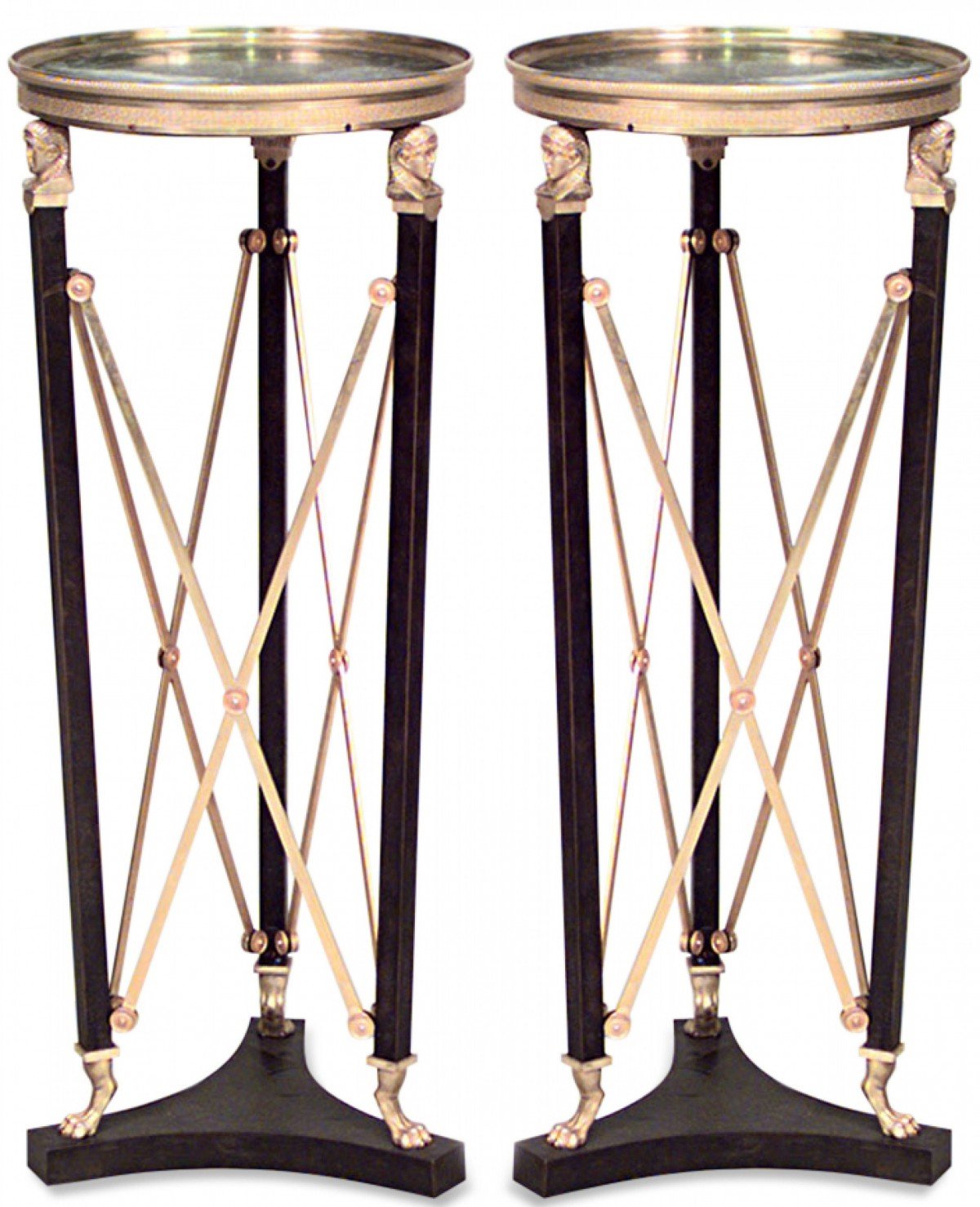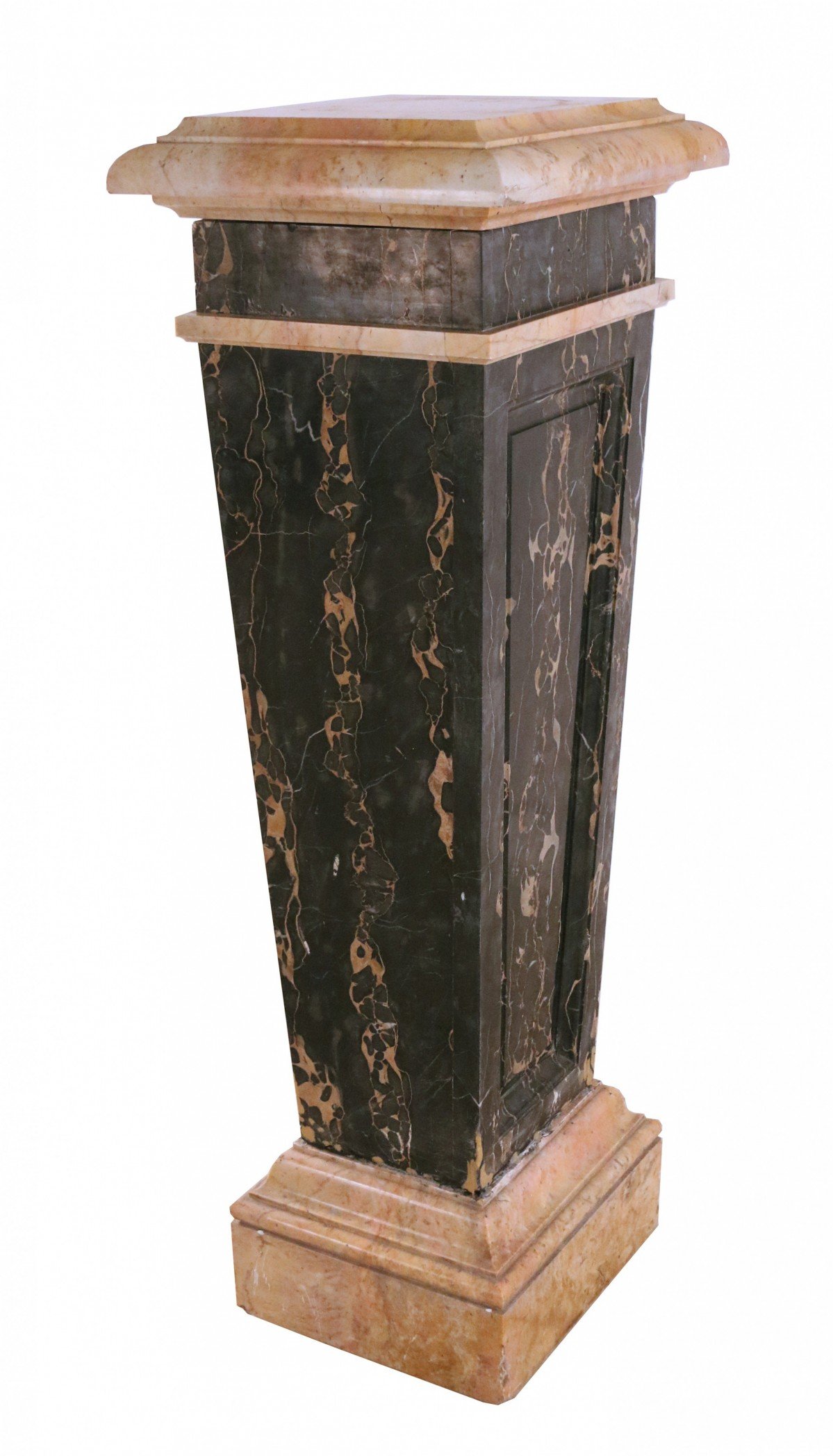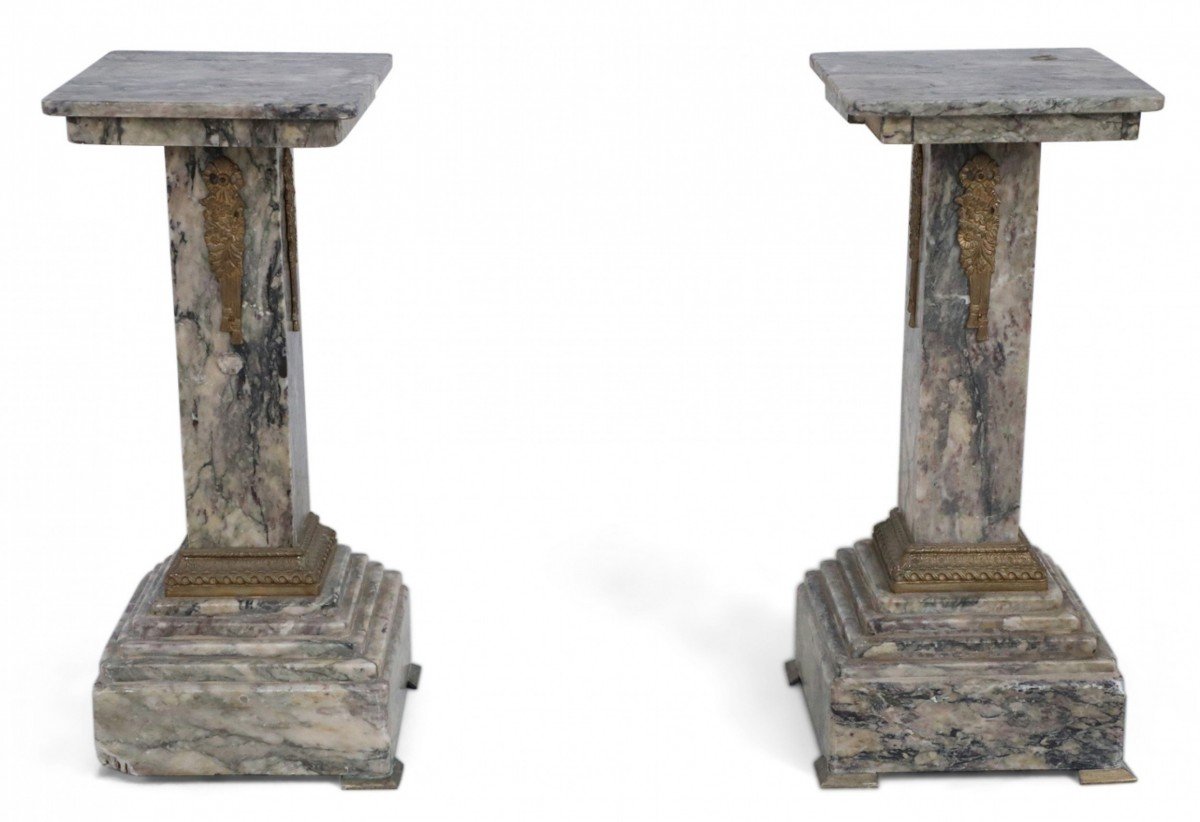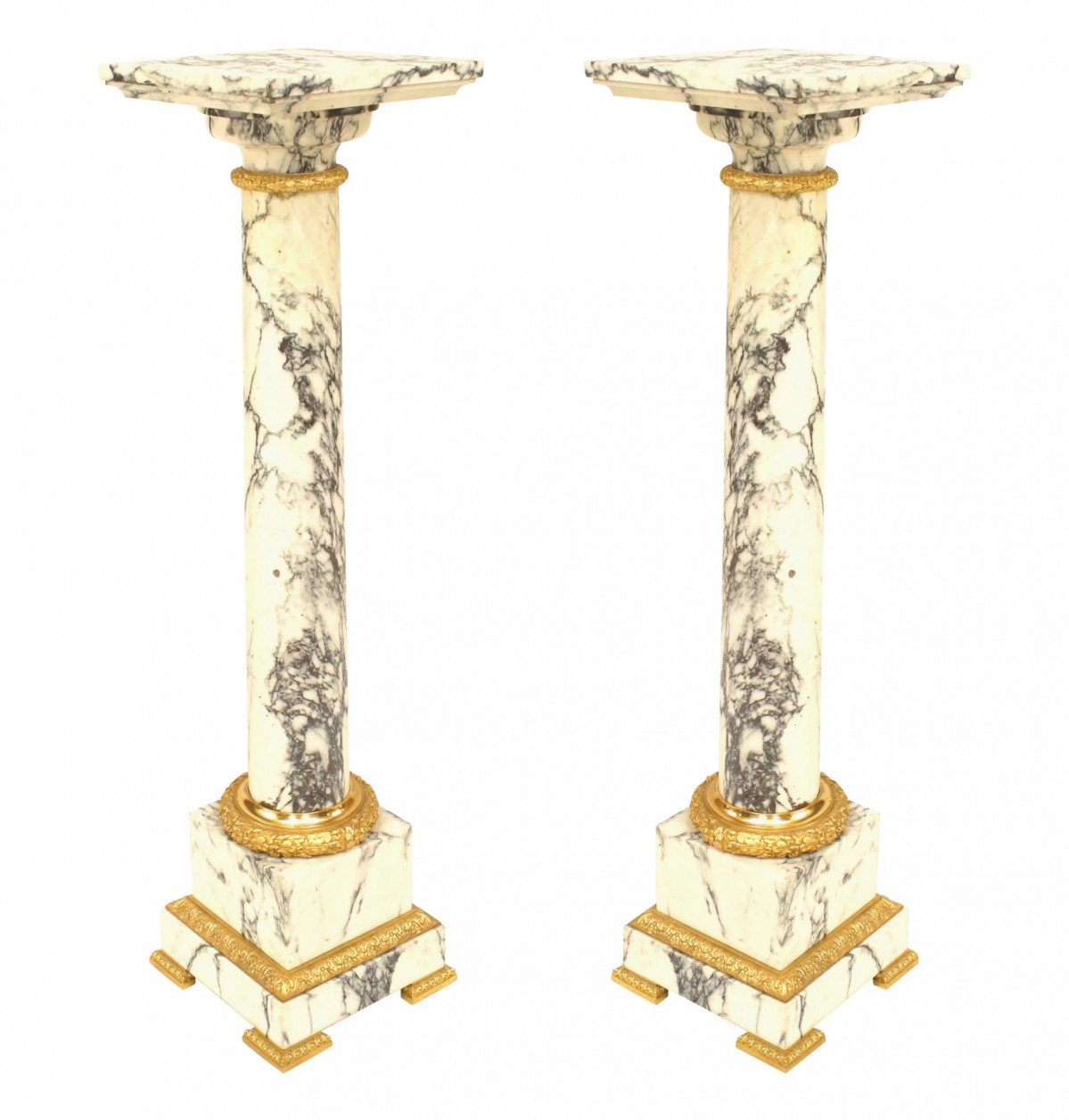X
{{ modalTitle }}
PLEASE FILL IN THE REQUIRED FIELDS.X
X
{{ modalTitle }}
Choose one of the options below.X
ITEM SUCCESSFULLY
ADDED TO PROJECT
Pair of French Empire Bronze Pedestals
 French
French Empire
Empire Tables, Pedestals/Display
Tables, Pedestals/Display Pedestals, Misc. Furniture
Pedestals, Misc. Furniture
Newel Warehouse
32-00 Skillman Ave
Long Island City NY - 11101
 (212) 758-1970
(212) 758-1970
Pair of French Empire Bronze Pedestals

Newel Warehouse
32-00 Skillman Ave
Long Island City NY - 11101
 (212) 758-1970
(212) 758-1970
 Tables, Pedestals/Display
Tables, Pedestals/Display Pedestals, Misc. Furniture
Pedestals, Misc. FurnitureEmpire
A period of design during the reign of Napoleon I. It was most prevalent between 1800 and the late 1820s. It was considered the second wave of neoclassicism and marked a return to ostentatious design, a departure from the more conservative Directoire period that directly preceded it. It was intended to idealize the majesty of the French state and Napoleonic rule. Mahogany was the most popular wood during the period, and brass ornamentation and dark marbles were in vogue. Greek, Roman, and Egyptian motifs were also widely used. The style spread throughout Europe and appeared in America in some of Duncan Phyfe's work.
Bronze doré
A French 18th and 19th Century gilding technique of applying an amalgam of fine, high-carat gold with mercury to copper, brass, or most commonly bronze objects. The bronze is exposed to high heat in a kiln burning off the mercury leaving a thin gold coat behind that is adhered to the metal. Commonly used by the craftsmen, Fondeurs-ciseleurs (founders and finishers), for decorative mounts in furniture, clocks, candelabras, and porcelain. Due to the health hazards of mercury, the technique waned into the late 19th Century and was replaced by electroplating.
Empire
A period of design during the reign of Napoleon I. It was most prevalent between 1800 and the late 1820s. It was considered the second wave of neoclassicism and marked a return to ostentatious design, a departure from the more conservative Directoire period that directly preceded it. It was intended to idealize the majesty of the French state and Napoleonic rule. Mahogany was the most popular wood during the period, and brass ornamentation and dark marbles were in vogue. Greek, Roman, and Egyptian motifs were also widely used. The style spread throughout Europe and appeared in America in some of Duncan Phyfe's work.
Bronze doré
A French 18th and 19th Century gilding technique of applying an amalgam of fine, high-carat gold with mercury to copper, brass, or most commonly bronze objects. The bronze is exposed to high heat in a kiln burning off the mercury leaving a thin gold coat behind that is adhered to the metal. Commonly used by the craftsmen, Fondeurs-ciseleurs (founders and finishers), for decorative mounts in furniture, clocks, candelabras, and porcelain. Due to the health hazards of mercury, the technique waned into the late 19th Century and was replaced by electroplating.
Empire
A period of design during the reign of Napoleon I. It was most prevalent between 1800 and the late 1820s. It was considered the second wave of neoclassicism and marked a return to ostentatious design, a departure from the more conservative Directoire period that directly preceded it. It was intended to idealize the majesty of the French state and Napoleonic rule. Mahogany was the most popular wood during the period, and brass ornamentation and dark marbles were in vogue. Greek, Roman, and Egyptian motifs were also widely used. The style spread throughout Europe and appeared in America in some of Duncan Phyfe's work.
Bronze doré
A French 18th and 19th Century gilding technique of applying an amalgam of fine, high-carat gold with mercury to copper, brass, or most commonly bronze objects. The bronze is exposed to high heat in a kiln burning off the mercury leaving a thin gold coat behind that is adhered to the metal. Commonly used by the craftsmen, Fondeurs-ciseleurs (founders and finishers), for decorative mounts in furniture, clocks, candelabras, and porcelain. Due to the health hazards of mercury, the technique waned into the late 19th Century and was replaced by electroplating.










